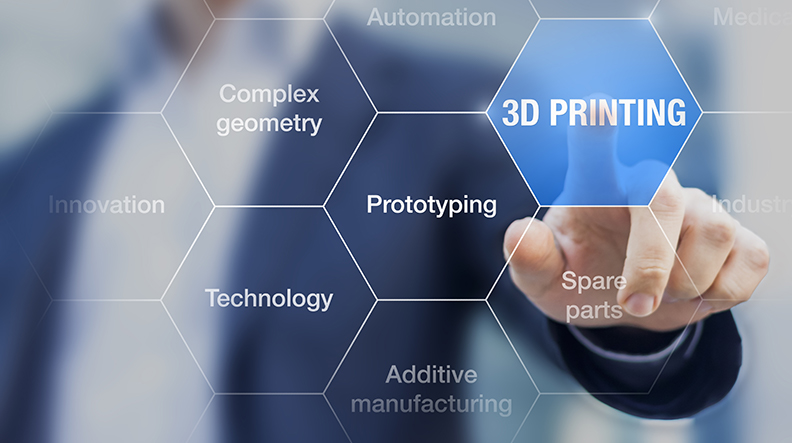
Stryker announced the construction of a state-of-the-art 3D printing manufacturing facility in order to produce new products across multiple divisions and set the company apart from its competitors.
The announcement came during the company’s fourth quarter earnings call, when leadership cited knee and spine as the first markets in which it plans to focus its additive manufacturing (3D printing) efforts. Stryker’s U.S. knee segment experienced 9.1 percent organic growth in the fourth quarter of 2015, bolstered by the adoption of recent cementless tibia plates, patella and revision cones made of additively manufactured printed titanium. The company plans to launch an additively manufactured titanium interbody device for spine in 2016.
“For the foreseeable future, at least the next three, four years or so, our focus is on innovative new products and not replacing our existing products with 3D printed products,” said William R. Jellison, Stryker’s retiring Vice President and Chief Financial Officer, during the call. “The pipeline of innovative new geometries that can’t be made without 3D printing is the area of focus. It’s not about trying to replace our products and drive down cost. Over time, ten years from now, that could be the case, but in the near- to mid-term, it’s really a focus on innovative new products.”
As evidenced by its new additive manufacturing investment and acquisition of MAKO Surgical in 2013, Stryker seeks a differentiated approach from its main competitors DePuy Synthes, Smith & Nephew and Zimmer Biomet, especially in joint reconstruction. Stryker’s major competitors also sell additively manufactured hips or knees, and a handful of spine companies (4WEB, joimax, K2M, Nexxt Spine, Oxford Performance Solutions) recently launched new products produced with this technology. However, Stryker’s expansion of its in-house capabilities shows the company’s dedication to additive manufacturing and offers further validation for the technology as a resourceful manufacturing process in orthopaedics.
Robotics and additive manufacturing are two hotly-discussed topics in the orthopaedic industry. Manufacturers believe that both are innovative technologies that may improve patient outcomes via better implant positioning (robotics) and greater bony in-growth (3D printing). A challenge remains, however, in making the technology cost-effective or rationalizing the price, both internally and to hospital customers. As two still-emerging technologies, robotics and additive manufacturing lack the support of strong clinical and outcomes data.
Robotics and additive manufacturing are not expected to be big growth drivers for Stryker in the near term, said Kevin Lobo, Chairman and CEO. The company’s core joint reconstruction growth will continue to derive from the Triathlon knee and Accolade hip systems. However, recent investments will provide incremental growth and set up Stryker’s sales reps for conversations that competitors aren’t having with customers.
“Over time, I expect robotics and 3D printing to take on a more important portion of our overall sales, and they will be sustainable and sticky if we have something that the competition doesn’t have,” Lobo said.
Stryker also acquired Sage Products, a provider of goods for intensive care units and hospital settings, and Synergetics USA’s neuro portfolio. The Sage Products $2.77 billion all-cash transaction, reportedly the company’s biggest-ever acquisition, positions Stryker to respond faster to “Never Events” such as infections. The acquisition is part of the MedSurg division, but is expected to play a role in orthopaedics as bundled payments receive a heightened focus. The Synergetics portfolio is expected to complement Stryker Instruments’ neuro, spine and ENT business. Synergetics achieved revenue of $31 million in 2015.
Stryker reported 2015 orthopaedic revenue of $4.2 billion, +6.7 percent from 2014 in constant currency, and spine revenue of $740 million, +3.2 percent.
Carolyn LaWell is ORTHOWORLD’s Chief Content Officer. She can be reached by email.
CL
Carolyn LaWell is ORTHOWORLD's Chief Content Officer. She joined ORTHOWORLD in 2012 to oversee its editorial and industry education. She previously served in editor roles at B2B magazines and newspapers.




